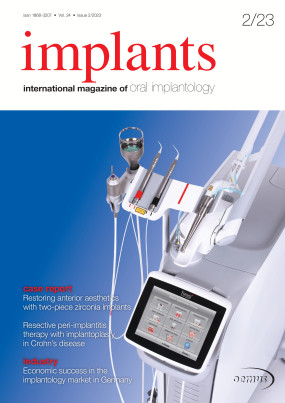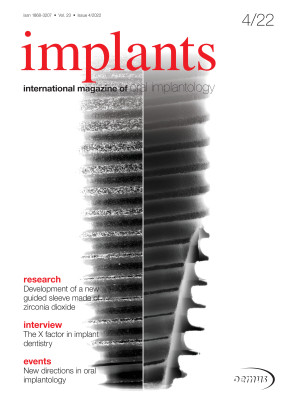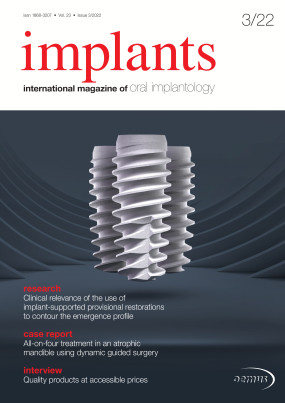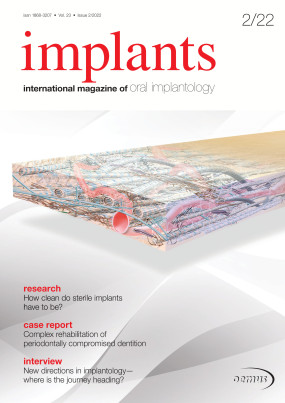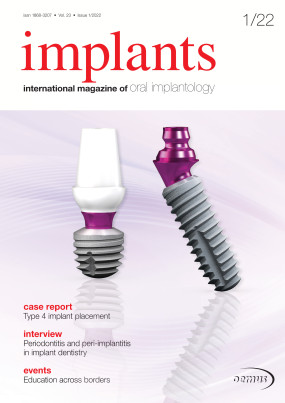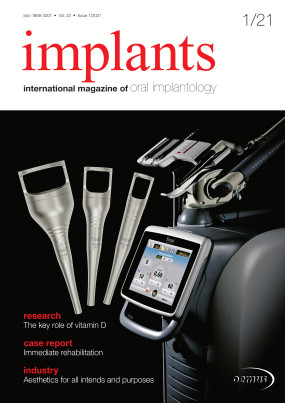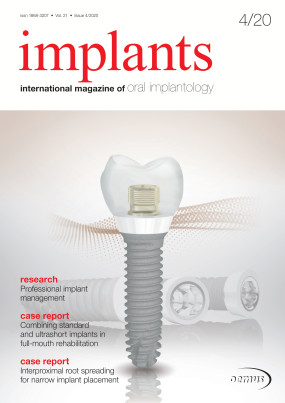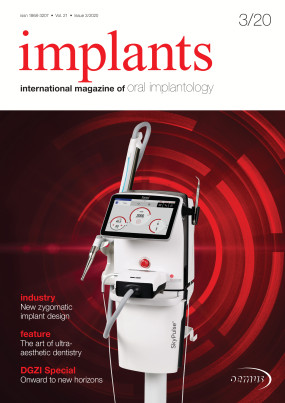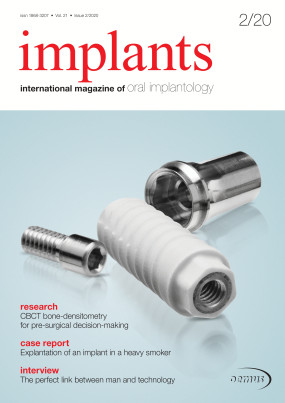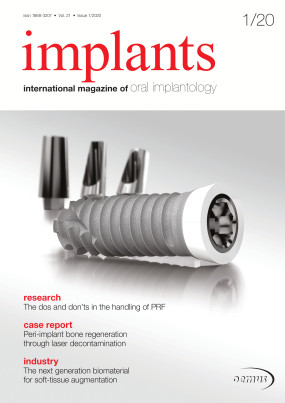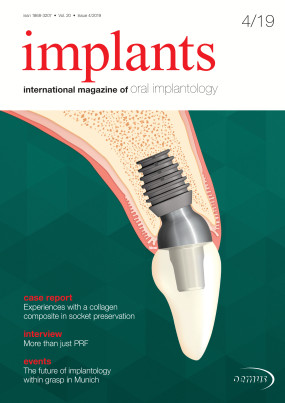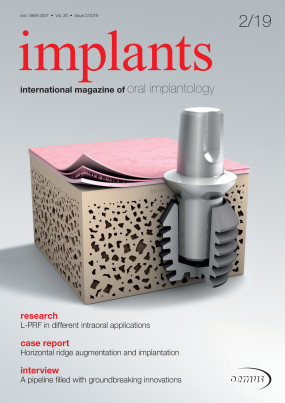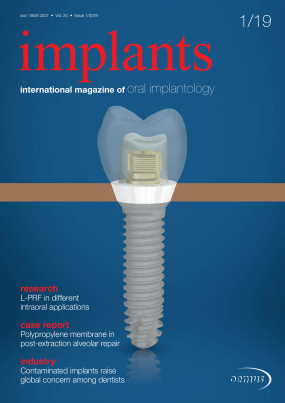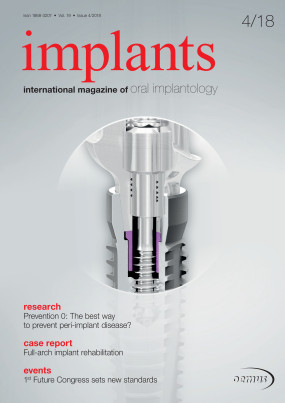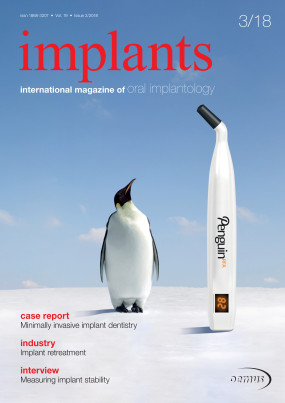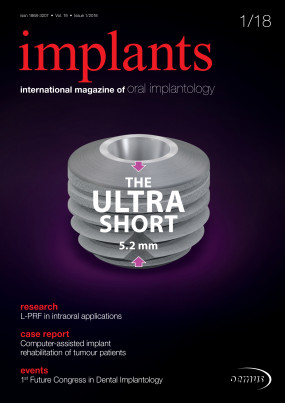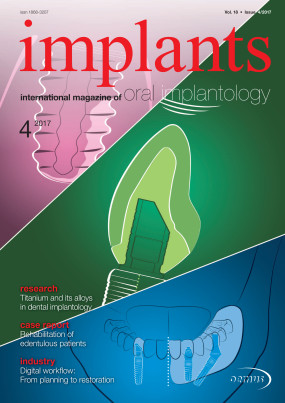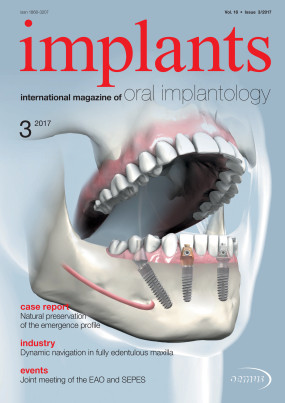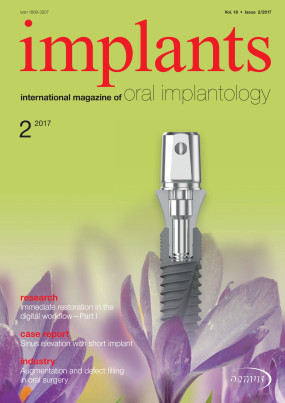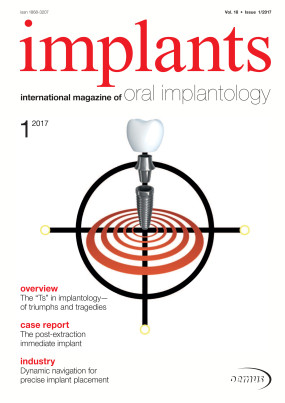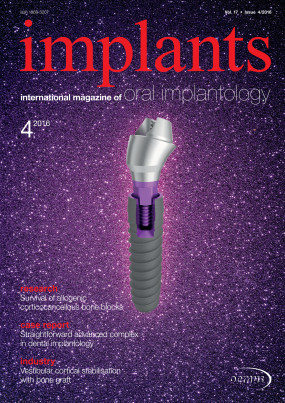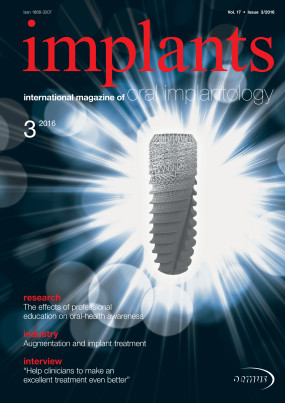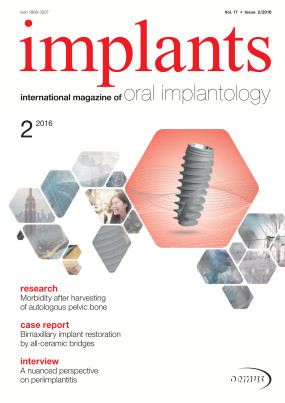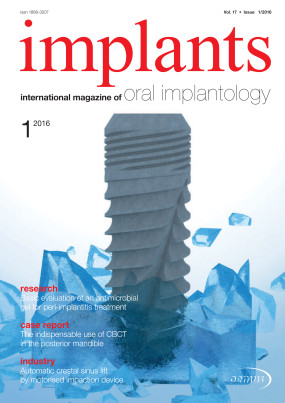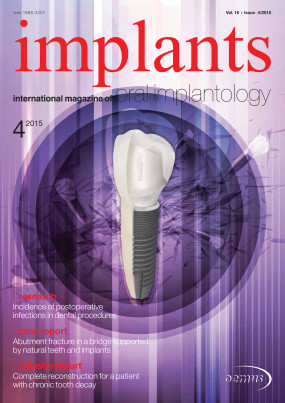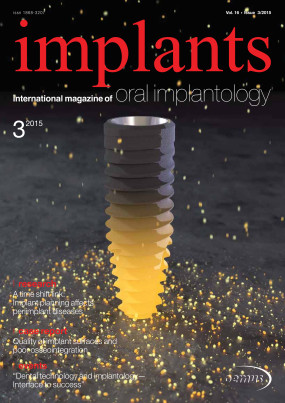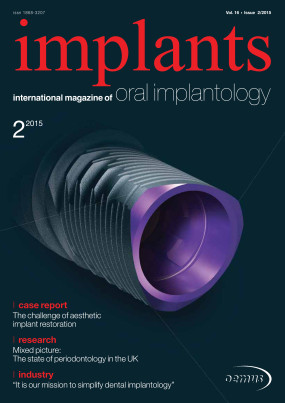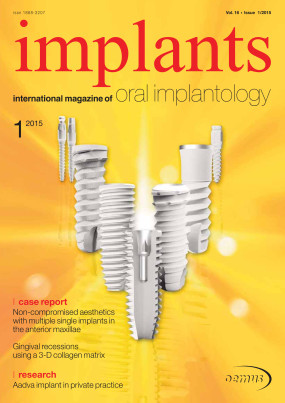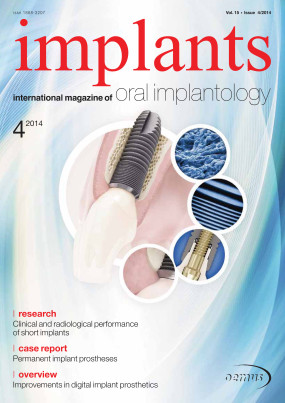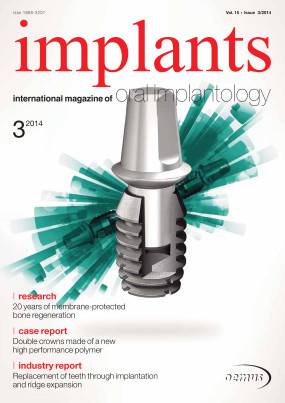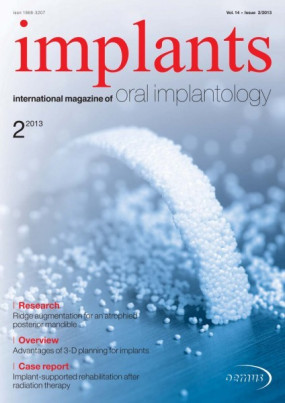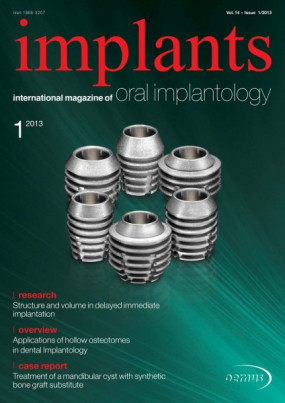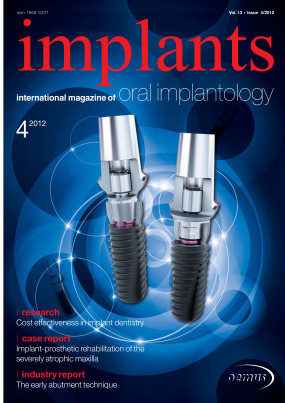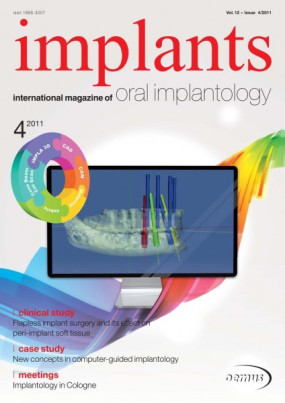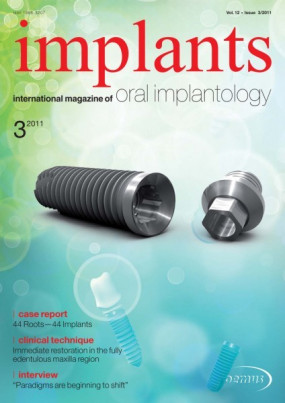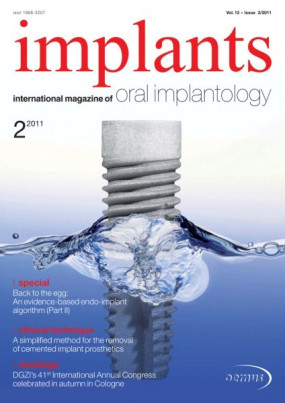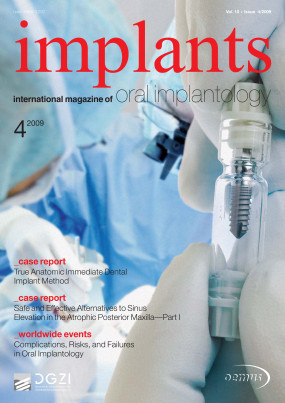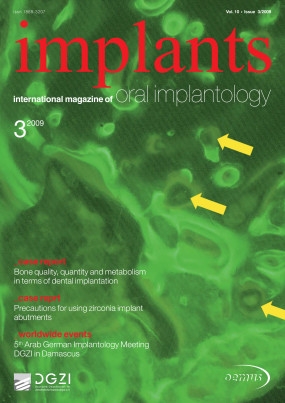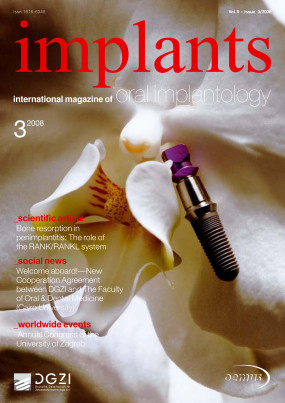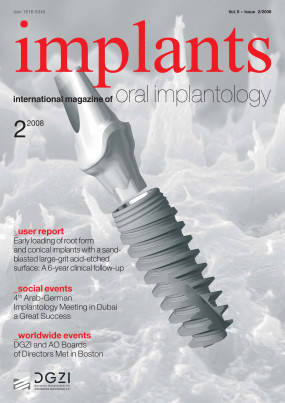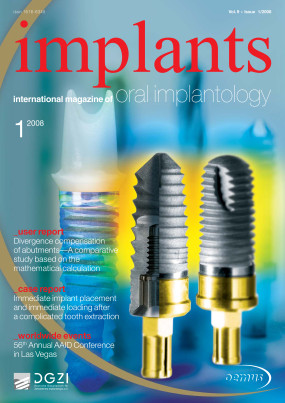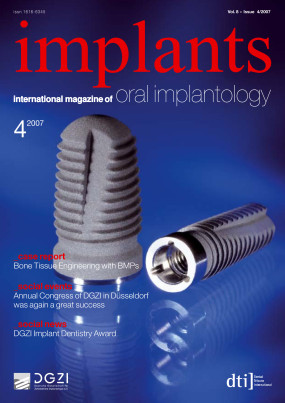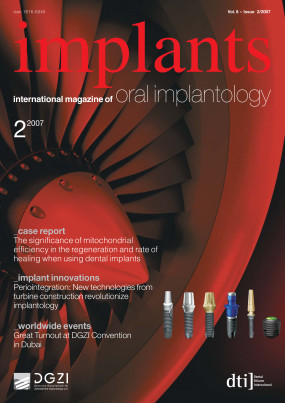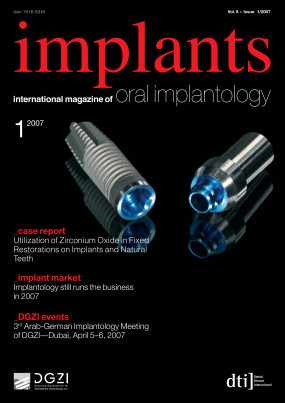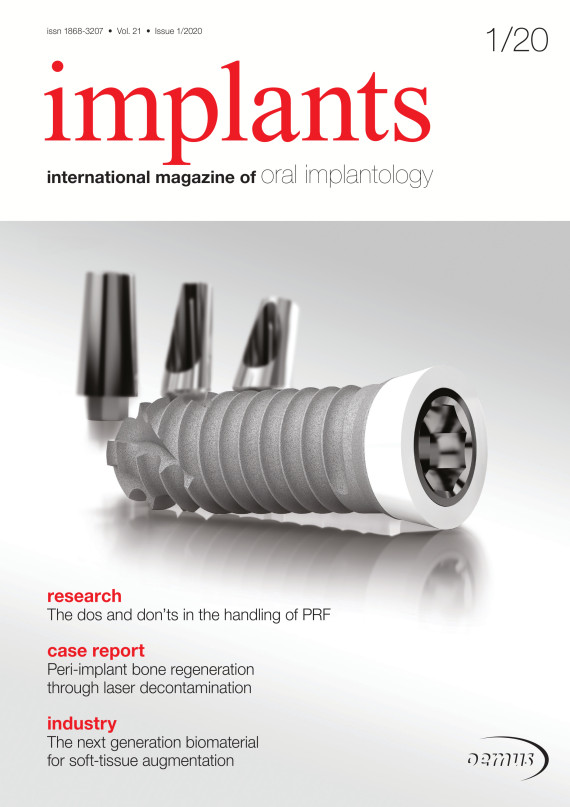Inhaltsverzeichnis
1
3
With a 50-year history, the German Association of Dental Implantology (DGZI) represents a practiceoriented and evidence-based approach to implantology in Germany. DGZI always keeps pushing boundaries in this particu-larly innovative field of dentistry. We place an overarching focus on actively supporting our practising colleagues and dental technicians by offering a wide range of special training courses...
4
6
The dos and don’ts in the handling of PRF
Prof. Shahram Ghanaati, Dr Sarah Al-Maawi, Dr Eva Dohle & Dr Torsten S. Conrad, Germany
Autologous blood concentrates, and platelet-rich fibrin (PRF) in particular, are increasingly used today to support wound healing and regenerative processes.1PRF is made from the patient’s own peripheral blood without the addition of anticoagulants. A solid or liquidPRF matrix can be obtained through a single centrifu-gation process, depending on the collection tube that is used.2 ...
12
The failure rate of dental implants is reported to be higher in smokers than in non-smokers. The aim of the study described in this article was to compare the success rate of 721 dental implants inserted in 181 smokers with given reports in the literature. In our study, implants from one factory were used and the implants were inserted by one surgeon to exclude individual factors. In order to increase the success rate for dental implants inserted in smokers, a specific protocol was established in our dental surgery. In the following, the results of two patients are reported in detail...
16
Implant-retained overdentureon a very thin bone ridge
Drs Nicola Alberto Valente, Murali Srinivasan & Nicole Kalberer, Switzerland
A healthy 60-year-old female patient with no medical history presented at our clinic with a non-fitting full mandibular denture. Her chief complaints at this point included the lack of retention of her mandibular denture and poor aesthetics, coupled with difficulty in chewing and embarrassment at social events. The treatment plan comprised the rehabilitation of jaw function and aesthetics with a new set of dentures, including a conventional maxillary complete denture (CD) and a mandibular implant-supported overdenture (IOD) retained by four implants.
22
Peri-implant bone regeneration through laser decontamination
Prof. Wilfried Engelke, Dr Christian Engelke, Germany; Dr Victor Beltrán, Chile & Dr Marcio Lazzarini, Germany
The recently published S3 guidelines of the German As-sociation of Oral Implantology (DGI) and the German So-ciety of Dentistry and Oral Medicine (DGZMK) state that peri-implant infections can be categorised into peri-implant mucositis and peri-implantitis.1 In peri-implant mucositis, only the supracrestal soft-tissue interface is involved; in peri-implantitis, the bony implant site is also involved.2 Smoking is the main risk factor for peri-implant mucositis, but it is likely that there are further contributing factors, such as cement residue, diabetes mellitus and sex.2 The development of peri-implantitis is particularly favoured by a history of periodontal disease, smoking and interleukin-1 polymorphism.4, 5 The main diagnostic criterion for distinguishing peri-implantitis from peri-implant mucositis is the lack of reversibility of the condition. Peri-implantitis can be characterised by putrid secretion, increasing probing depth, pain and radiographic bone resorption. Implant loosening requires a high degree of bone resorption in the case of peri-implantitis. Microbiological tests are rather unspecific regarding peri-implant mucositis and peri-implantitis...
28
32
On 17 January 2020, Camlog DACH organised the first NovoMatrix™ expert round table in Wimsheim, Germany. At this meeting, the clinicians involved in the pre-launch phase, gathered to exchange and discuss their experiences with the new biomaterial. After the presentation of the clinical and preclinical studies performed by Dr Gerhard Iglhaut (Germany) and Dr Edward Pat Allen (USA), the experts split in six groups to share and discuss their clinical experience...
34
In order to avoid stress and disharmony in the daily work routine and to appear professionally as a team to the outside world, clear communication with one another is important. Reciprocal feedback is therefore of vital importance in order for communication in the dental practice to be as simple, appreciative and smooth as possible. What needs to be taken into account in this regard will be highlighted in this article...
36
When it comes to innovations in implant den-tistry, the refinement of site preparation has fallen behind the advancements of implant design. Prof. Stefan Holst, Vice President of Premium Implants at Nobel Biocare and co-author of an original research study with Stanford University on the OsseoShaper™ design and biological benefits, describes some of the challenges presented by conventional drilling protocols and explainshow this new device has been designed to overcome these problems...
38
Dr Lenka Banasova runs her own dental centre, Pearl Dental, in the Slovakian capital of Bratislava, where she focusses on periodontics and implant dentistry. Most importantly, however, she is one of the few dentists to touch on the largely neglected topic of oxidative stress and its relevance to the fields of periodontology and implantol-ogy. In this interview, she explains how natural antioxidants—as contained in CURAPROX Perio Plus+—can improve therapy.









